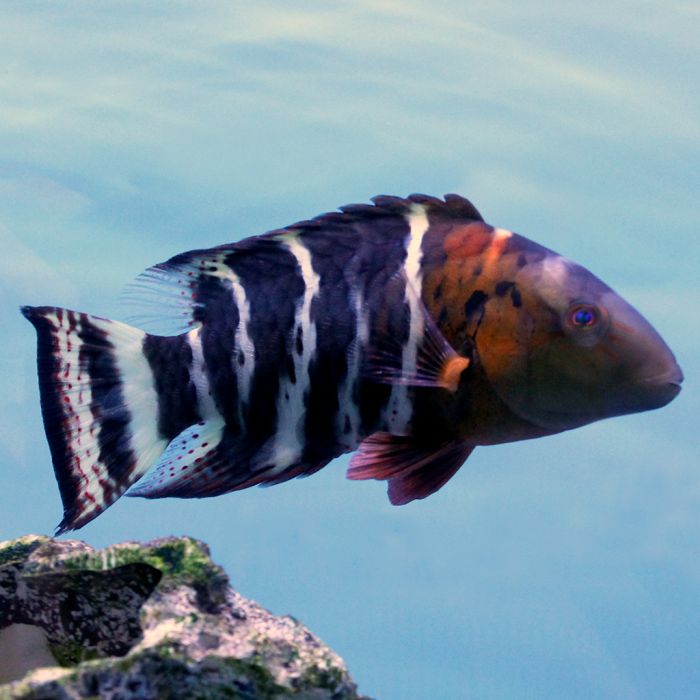Maori Red Breasted Wrasse (Asia Pacific)
Wrasses are prone to jumping from the aquarium when startled or excited so we recommend a secure lid. They feel most secure when there is plenty of live rock to hide in, as well as open space for swimming. Most species may be kept in pairs or harems as long as they are added together or females first. They do not appreciate living with other species of wrasse, so any aquarium with several species must be large enough and the most peaceful species added first.
They should be fed two to three times a day plenty of high quality meaty items, frozen Mysis shrimp, krill, chopped seafood, marine algae and Spirulina.
These wrasses are easy to keep and have active personalities. They have big appetites for invertebrates, especially shrimp, as well as other crustaceans, snails, worms including bristleworms, mantis shrimp and starfish among others. They do not bother corals or anemones, but may flip over rocks in their search for food. They may also bully or eat small fish, but are typically nonaggressive with other large fish as long as they have a different shape. Similarly shaped fish are seen as a threat and may be targeted; we do not recommend keeping them with small species such as flasher wrasses. When threatened or resting it may dive under the sand, but more commonly sleeps within the rocks.
A gentle giant, the exotic Red Breasted Maori wrasse is a breathtaking fish with bold tribal themed markings over its scales. Overall it is warm tones of rusty red with alternating bands of light cream and dark coffee over its flanks and tail. Its face is yellow with scarlet stripes extending from its eyes. Similar scarlet speckles decorate its fins as well. Males and females are visually identical. Although it may grow up to 16 Inches long it has a very peaceful demeanor and should not be kept with aggressive species. It may occasionally sift through the sand in search of food. Hard shelled invertebrates and tiny fish may be eaten. After a large meal it may go a few days without eating. We recommend an aquarium of at least 180 gallons.
















